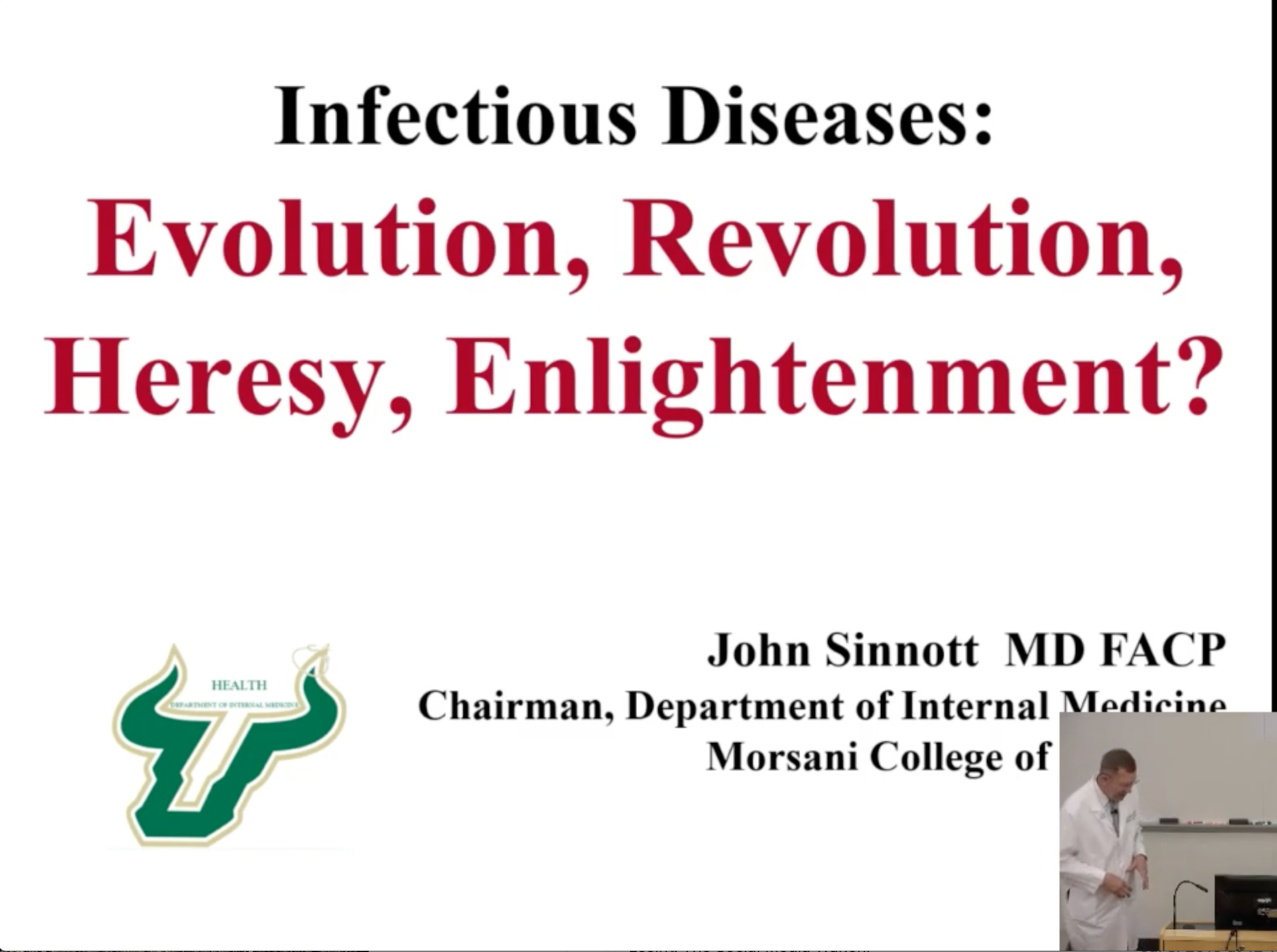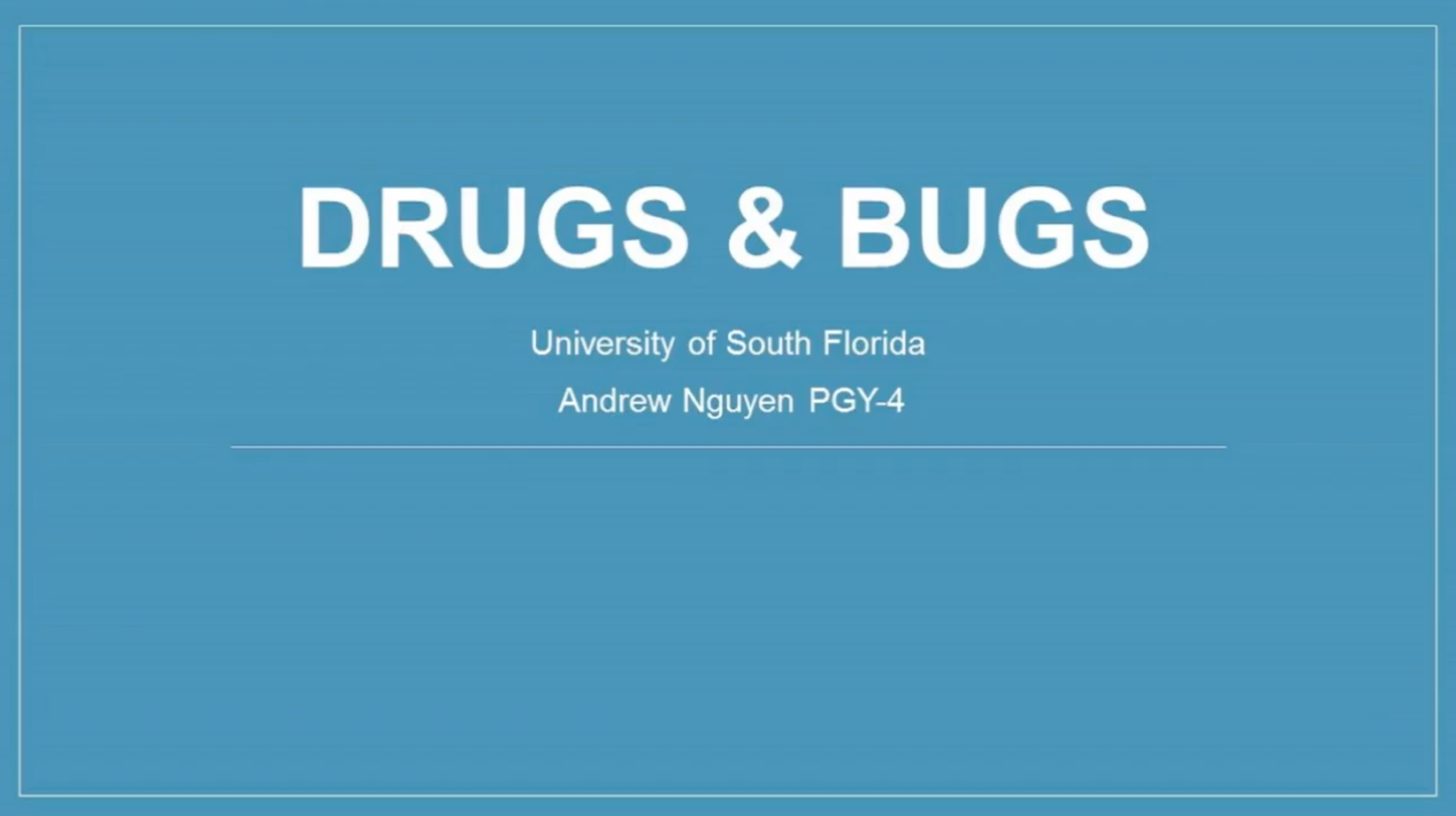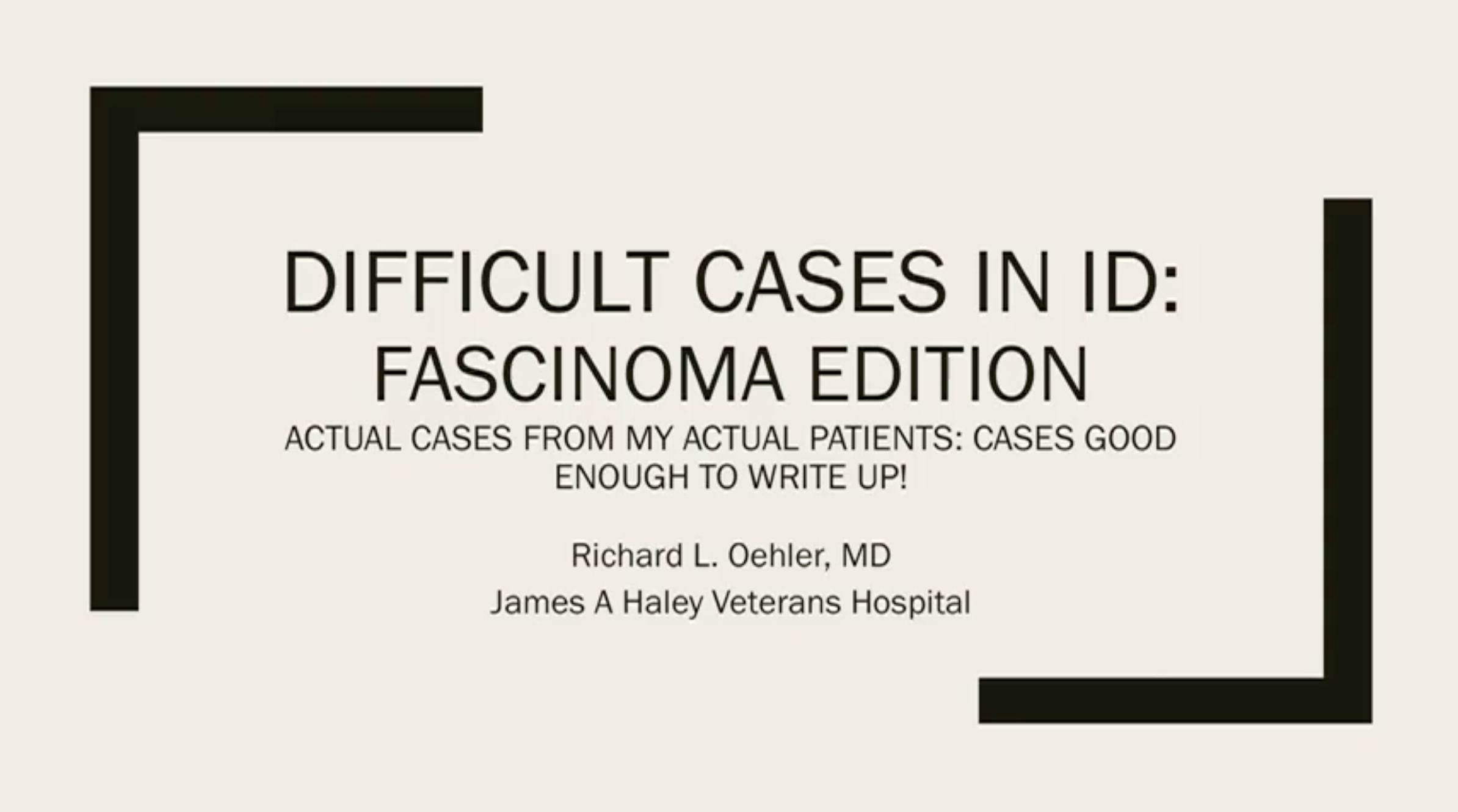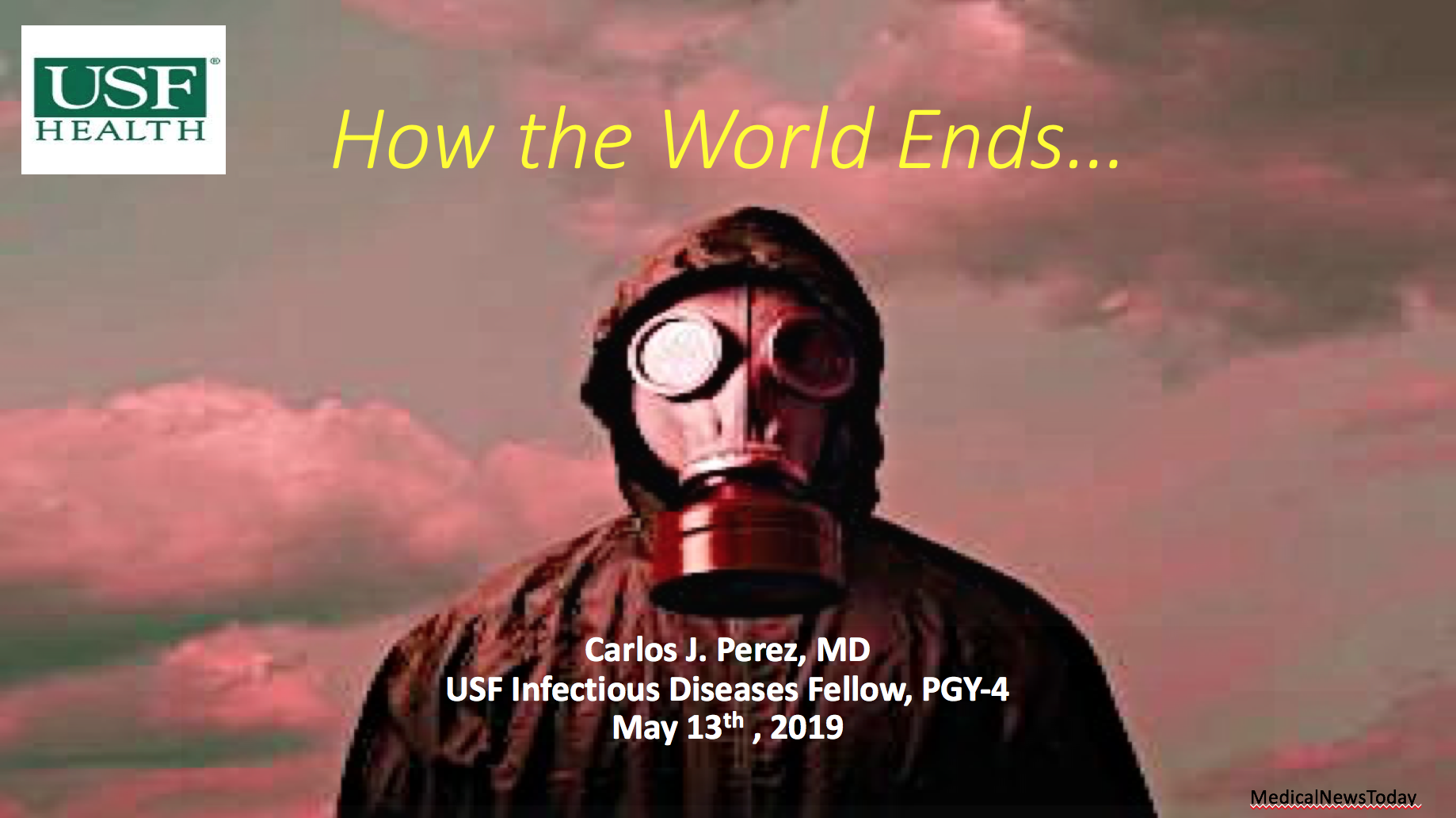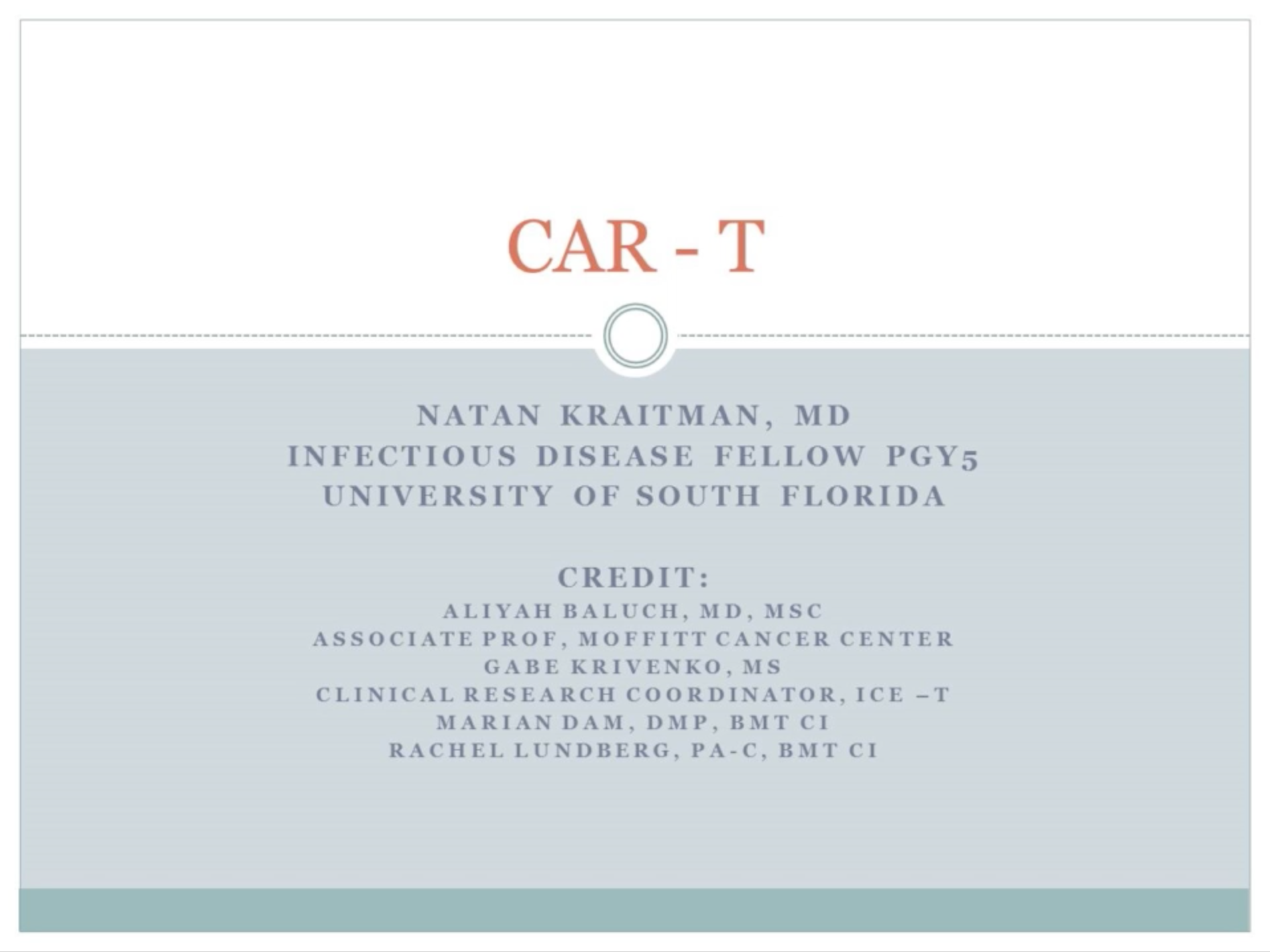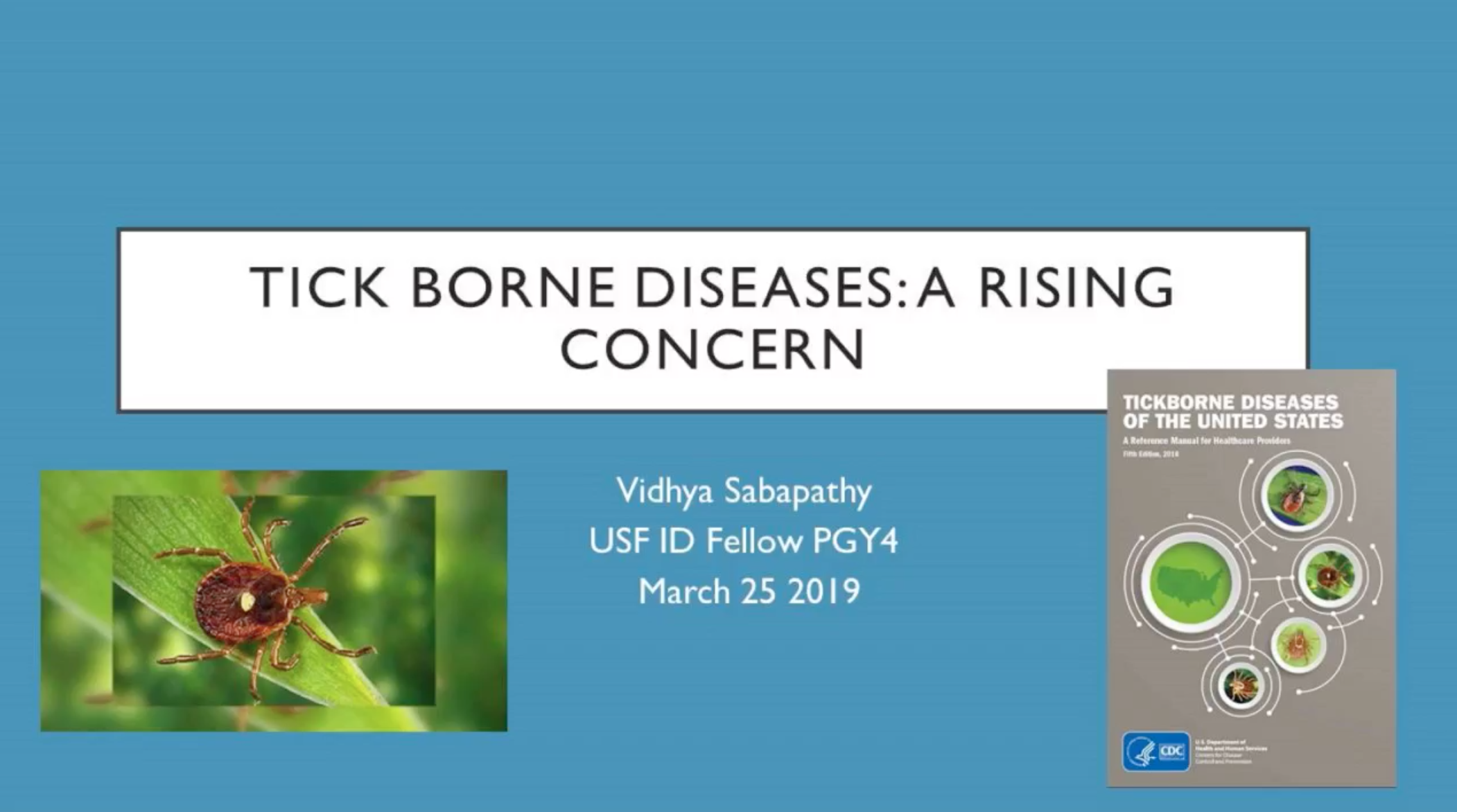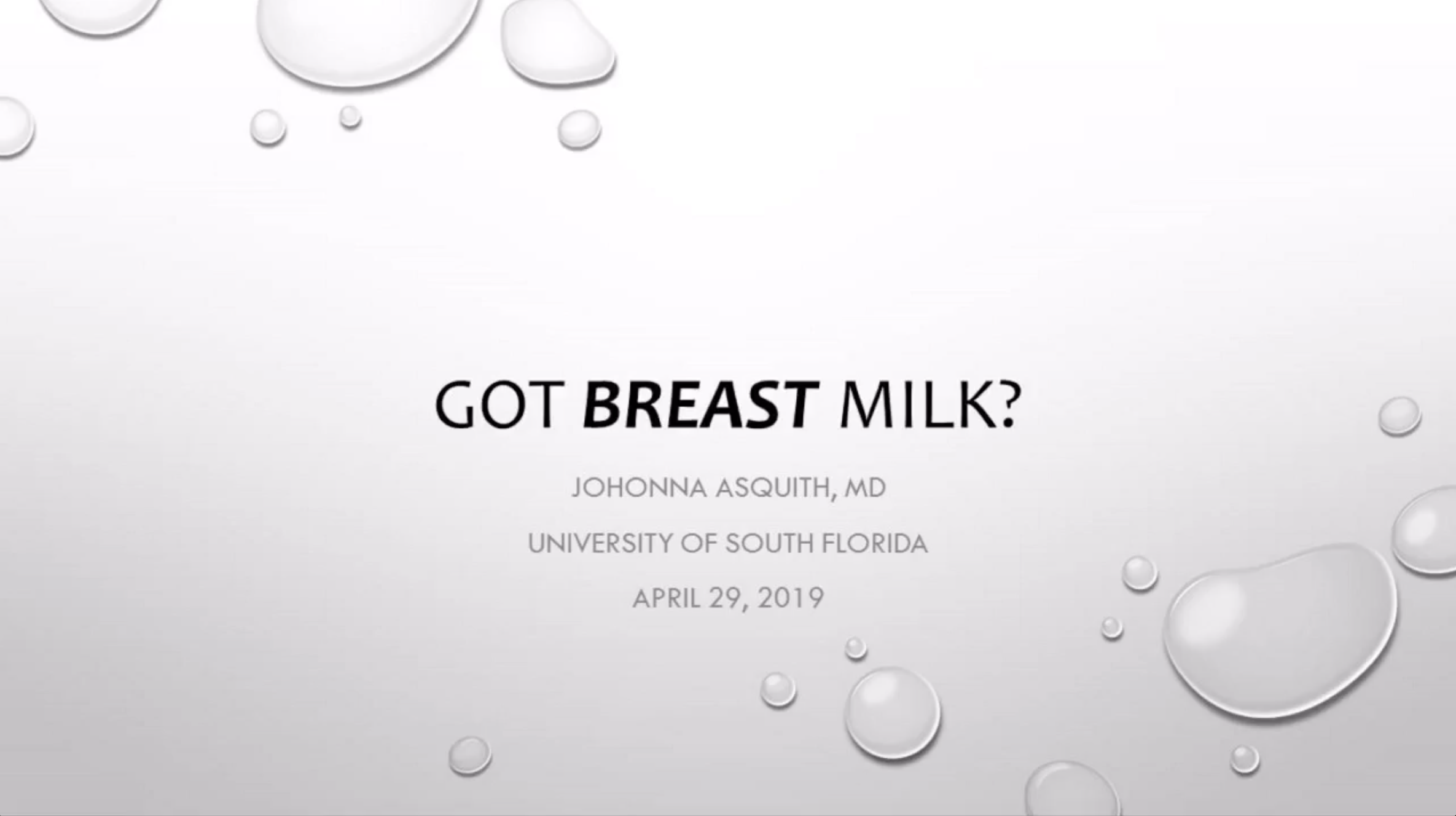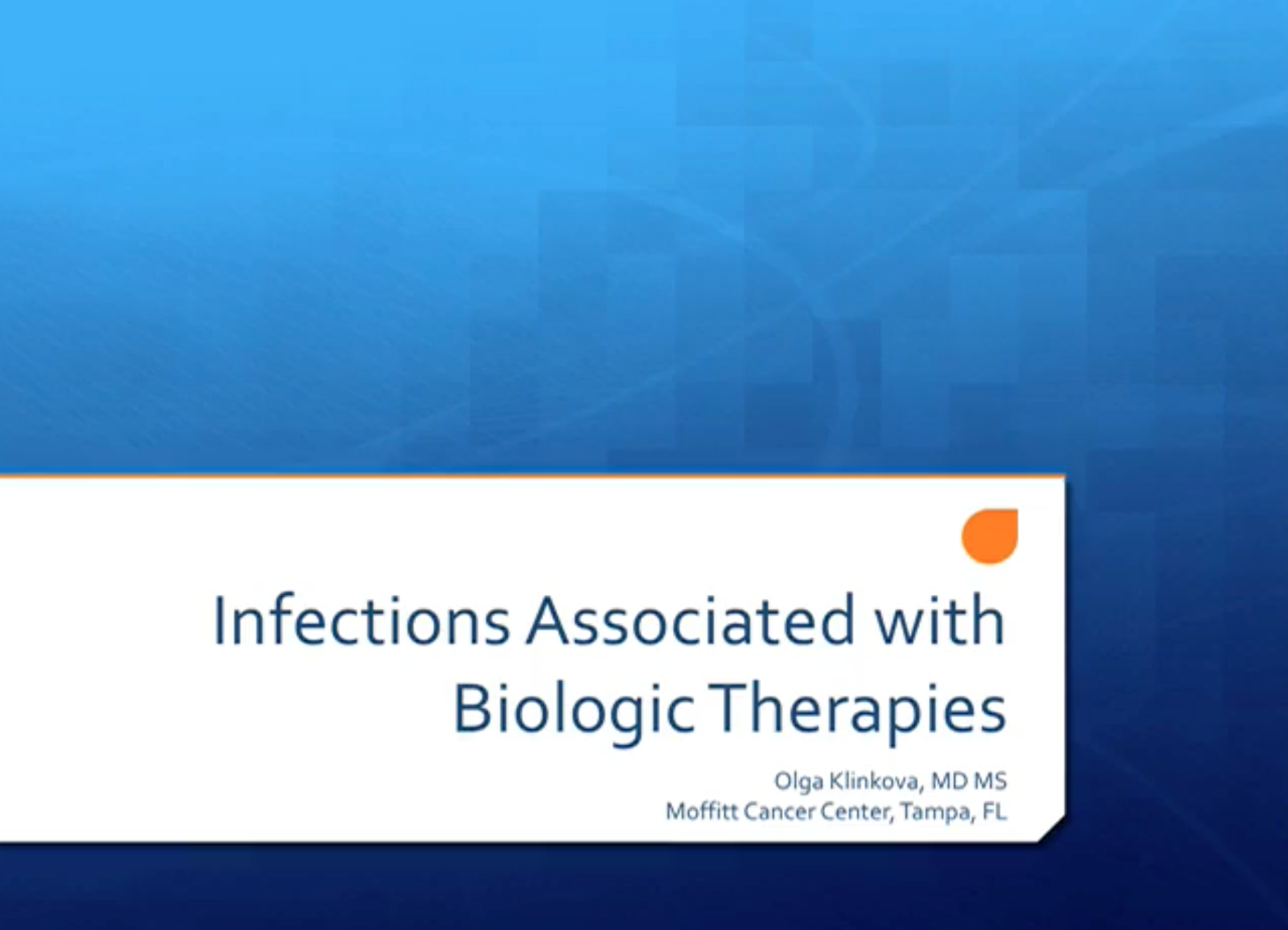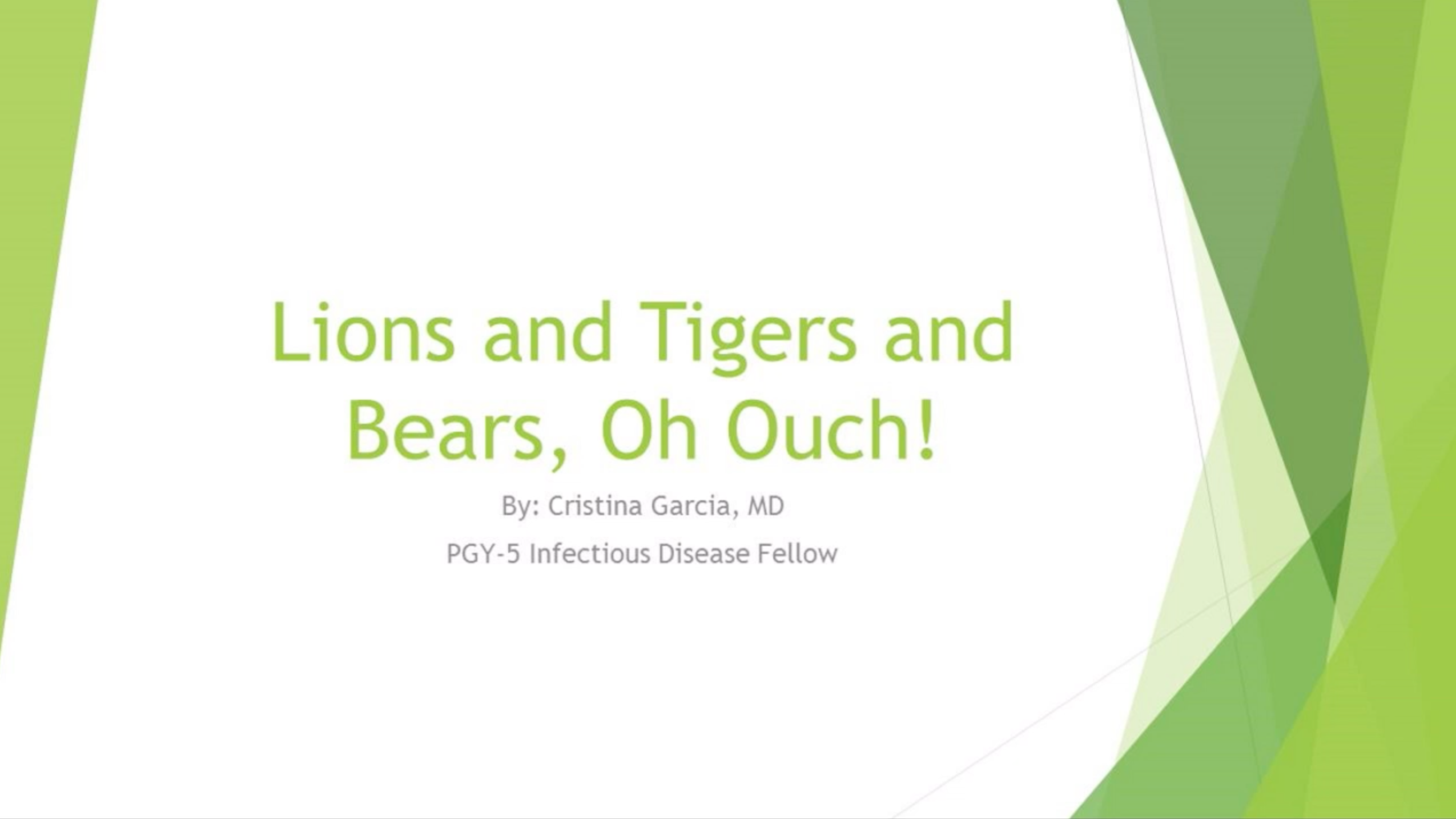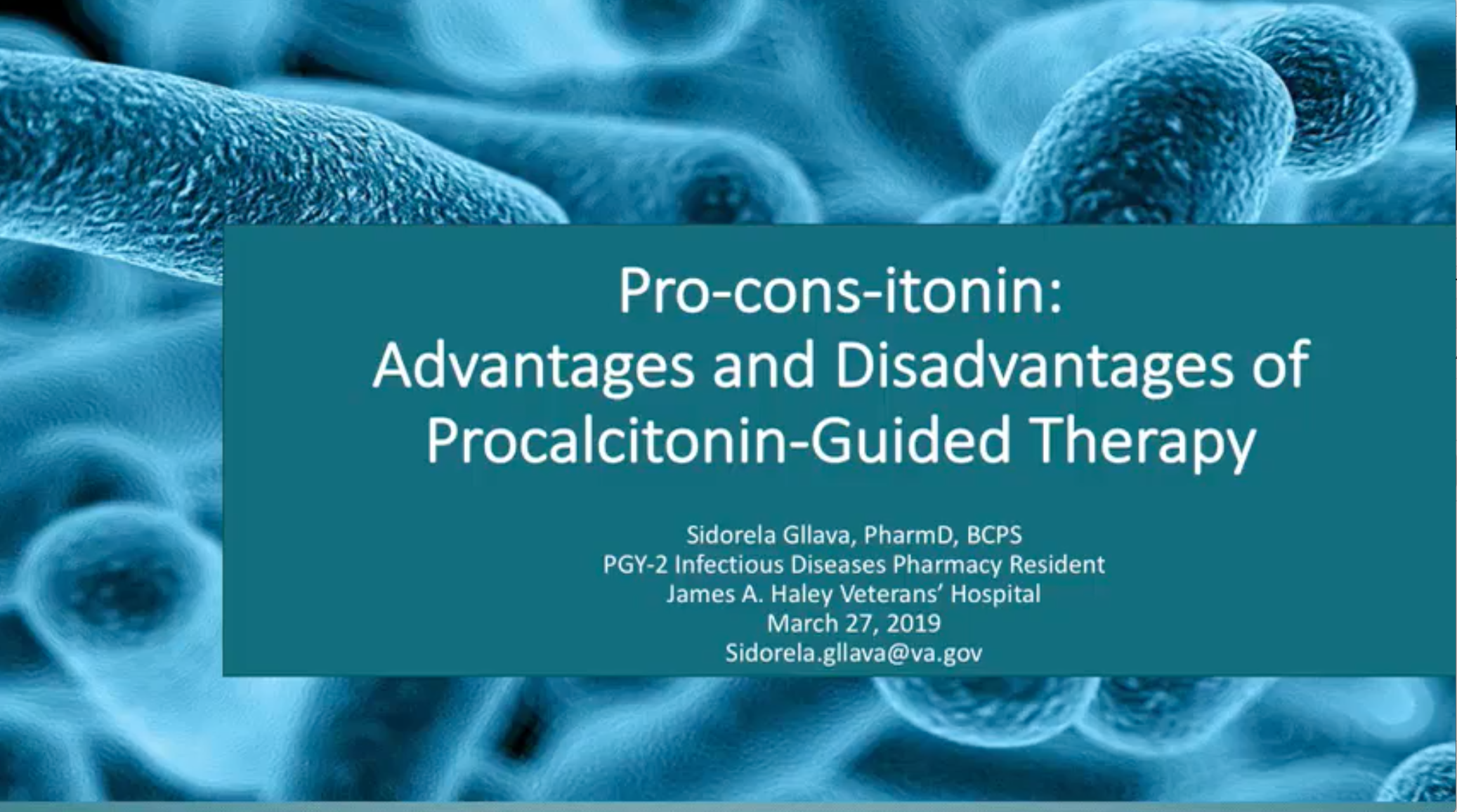Dr. Sinnott’s grand rounds presentation reflects upon the history of infectious diseases, from the late 1960’s, when the battle with infectious agents was felt to have been won, to the present age of widespread antimicrobial resistance, emerging pathogens, and the newer therapies of the “post-antibiotic era.” He focuses on genetic susceptibility, and how this has played a major role in infectious diseases outbreaks of the past. He also touches upon commercial “boutique” genetics services which offer to sequence an individual’s genome for ancestry and hereditary purposes. Lastly, he comments on the importance of the human microbiome to disease susceptibility and wellness.
Archives
Drugs & Bugs: Complications of Addictive Disorders
Dr. Nguyen examines the complex problem of the addiction crisis, a major cause of morbidity and death in much of the US, and especially in the state of Florida. He first discusses the epidemiology of addictive disorders and the US states where these patients are more likely to be found. He then discusses specific addiction-related medical syndromes, including acute eosinophilic pneumonia, crack cocaine lung, complications of body packing, fungal sinusitis, endocarditis, skin and soft tissue infections, fungal pneumonia, and other septic complications of injection drug use
Difficult Cases in ID: Fascinoma Edition
Dr. Oehler discusses three fascinating patients from his archives involving cases that were good enough to publish in medical journals. He first discusses a 59 year old patient with a fever, headache, and a lytic bone infection. He next reviews a 49 year old homeless man with an aquatic cellulitis and an unusual bacteremia. Lastly, he shares the history on a 50 year old patient with acute graft thrombosis after eating at a mexican restaurant. In the process of discussing these cases, Dr. Oehler discusses the differential diagnosis of these presentations and the unusual syndromes that form the ultimate diagnoses.
Apocalyptic Scenarios and Infectious Disease
Dr. Lopez-Perez examines the infectious diseases syndromes that via bioterrorism and natural outbreaks could be responsible for “end of the world” scenarios. He initially focuses on agents of bioterrorism, including Anthrax, Smallpox, Plague, Tularemia and Botulism. He then goes on to discuss the threat posed by pandemic influenza. He also touches upon the possibility of genetically engineered pandemics, in which techniques such as “CRISPR” could be used to create “designer organisms” or to replicate or modify already fearsome pathogens (such as influenza or smallpox) with devastating results.
CAR-T Therapy: A Burgeoning New Cancer Treatment
Dr. Kraitman reviews the chronology of cancer treatment history, beginning with the dawn of cancer surgery and progressing through radiation, chemotherapy, immunotherapy, and ultimately, gene therapy. He then explains the basics of Chimeric Antigen Recepter T Cell therapy, a new state of the art therapy utilizing targeted T cells to destroy specific cancer cells. Dr. Kraitman then discusses potential toxicities of CART therapy, including neurotoxicty, Cytokine release syndrome, and HLH, and approaches to manage these adverse effects. Lastly, the speaker discusses infections associated with CAR-T therapy, including bacterial, fungal, and viral pathogens from a clinical series.
Tickborne Diseases: A Rising Concern
Dr. Sabapathy reviews the epidemiology of tick-borne diseases. She discusses the common identification techniques for the various tick species. She compares and contrasts Lyme disease versus Southern Tick-associated Rash Illness (STARI). She also draws a distinction between Lyme and Borrellia myamotoi. Lastly, she discusses how climate change is increasing the prevalence and distribution of tick-associated infectious diseases.
Got Breast Milk?
In this comprehensive review of breast feeding and breast milk by a physician and new mom, Dr. Asquith opens by discussing why breast feeding benefits both babies and their mothers. She relates the common reasons why some moms elect not to breast feed or stop breast feeding early. Dr. Asquith then shares data on the epidemiology of breast feeding by across the country. Next, she mentions the typical schedule for a breast feeding mom and essential care steps to ensure proper hygiene for breast feeding equipment. Dr. Asquith then dives deeper into some of the immunological and anti-infective benefits of nursing. She then shares information on the safety of nursing when a mom is sick with infectious syndromes like the Flu, travelers diarrhea, HSV and Zika virus. She closes by touching on milk banking and human milk pasteurization.
Infections Associated with Biologic Therapies
Dr. Klinkova reviews the general types of biologic agents available for patients today and their classification system. She focuses specifically on Tumor Necrosis Factor alpha (TNF-alpha) inhibitors. Dr. Klinkova extensively reviews their noninfectious and infectious adverse effects. Among the infectious complications, mycobacterial disease is among the most significant, and she reviews risk factors, screening, and prevention. Lastly, Dr. Klinkova reviews bacterial and viral complications of TNF agents, and closes by mentioning anti-integrin and anti-IL 12/23 agents.
Exposures Associated with Large Animal Bites
Dr. Garcia takes a close look at how large animal bites of can cause significant morbidity to human victims. She first reviews exposures due to large cats, including lions and tigers. She then discusses bites due to bears. Next, she discusses exposures due to reptiles, including venomous snakes. She emphasizes the knowledge and tools that infectious diseases specialists and patients need to know to prevent exposures and to treat them after they occur.
Pro-Cons-itonin: The Advantages and Disadvantages of Procalcitonin-based Therapy
Dr. Gllava reviews the value of the procalcitonin laboratory test as an inflammatory marker useful in making treatment decisions in infectious diseases patients. First, she introduces the idea of a biomarker: a laboratory assay that is useful in detecting inflammatory states. She then explains the advantages and disadvantages of procalcitonin as an ideal biomarker. Dr. Gllava goes on to describe the current recommendations for the use of procalcitonin in specific infectious conditions and reviews the body of scientific evidence for its use. Lastly, she reviews how hospitals can utilize procalcitonin-based algorithms to improve clinical care and promote antimicrobial stewardship.
